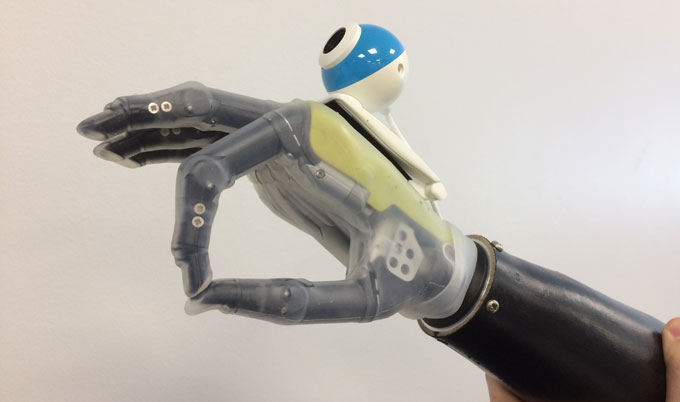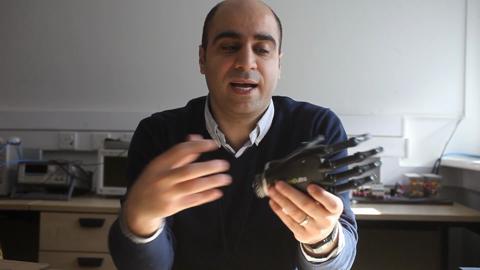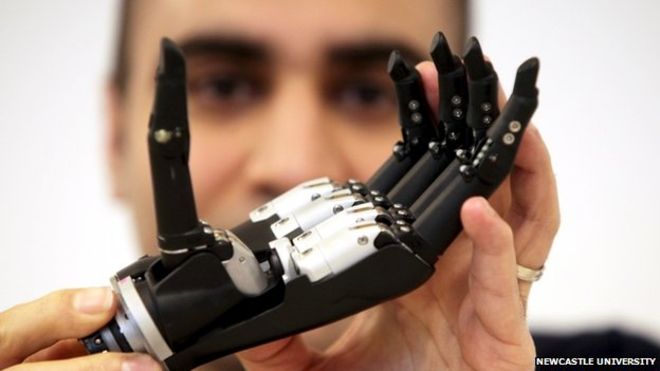A Hand With Eyes Beats Other Prosthetics With Flying Colors
LifestyleNewsWellness May 22, 2025 Damon Mitchell

While researchers around the globe work feverishly to hack the human body by any means necessary, a team in Newcastle, have come up with a simple solution to an old problem: how could we connect prosthetics to our brains when the brain is so complex?
Forget it. Give the limbs eyes and a brain of their own. The hand with a camera beats the response level of humanity’s best prosthetics but for way less money.
We’re not yet to a level of robotics where we can make entire robots that function like humans. We’re also not at the point of prosthetics where we can connect a replacement limb to the central nervous system (CNS) without a hitch.
Both endeavors are underway, but years if not decades away. Meanwhile, what if we took a midpoint between the two?
We can give prosthetics the simple awarenesses afforded our current technology, then give those prosthetics a basic framework of engaging the world around us. Our prosthetics could become little robots that do our bidding for us, something like our real limbs work, right?
Newcastle team
Funded by the Engineering and Physical Sciences Research Council (EPSRC), they set about to improve on current prosthetics.
“Prosthetic limbs have changed very little in the past 100 years,” said Dr. Kianoush Nazarpour, the co-author of the research in a University press release. “The design is much better and the materials’ are lighter weight and more durable but they still work in the same way.”
Nazarpour is the senior lecturer for Biomedical Engineering at the University. His team’s goal was to make a prosthetic which more people would be able to use to improve their lives.
“…We have developed a bionic hand which can respond automatically,” said Nazarpour. ”Just like a real hand, the user can reach out and pick up a cup or a biscuit with nothing more than a quick glance in the right direction.”
Eyes on our hands
Why not? Since we cannot connect a prosthetic to the brain, not without problems, why not give the prosthetic its own little brain and an eye with which to see?
The Newcastle team took parts available through the current social health care available in the U.K., then build a prototype, which works better than it’s competition.
The way it works is the camera on the hand takes a picture as the user moves the prosthetic towards an object. Using an onboard computer, it makes a judgment about the nature of the object (without consulting a database) to know how to adjust for grasping the object.
“One way would have been to create a photo database of every single object but clearly that would be a massive task,” said Dr. Nazarpour.
Instead, their hand uses a simple machine learning. Think of it as low-level artificial intelligence.
“So the computer isn’t just matching an image, it’s learning to recognize objects and group them according to the grasp type the hand has to perform to successfully pick it up,” said Nazarpour in the release.
“It is this which enables it to accurately assess and pick up an object which it has never seen before…”
A door handle, for example, would require something different than a martini glass. This is what we do with our own eyes and hands, but routed through the brain. The Newcastle design has its own brain, it’s own eyes.
The device
The prototype isn’t the ugliest prosthetic you’ve ever seen, but it looks kind of clunky at this point. Using a 99p camera, the current version captures detailed enough images at close range to function, but simple enough not to eat up power.
Response time on the prototype is milliseconds or ten times faster than the best alternative on the market.
Of the device, one test subject, Doug McIntosh said, “This offers for the first time a real alternative for upper limb amputees.” McIntosh called it a “huge leap forward.”
With some refinement, the limb could be more integrated, use a smaller camera, be super accurate and faster. We can close these gaps much faster than the alternatives, wiring to the CNS or growing new limbs.
Since this project is in the U.K., it may be a few years before it hits American shores, but it seems more likely we’ll have this before the alternatives.
Future scientists may grow new limbs from stem cells, then attach them to patients without problems, but we’re not there yet. Until then, let’s give the prosthetics eyes. Why not?

